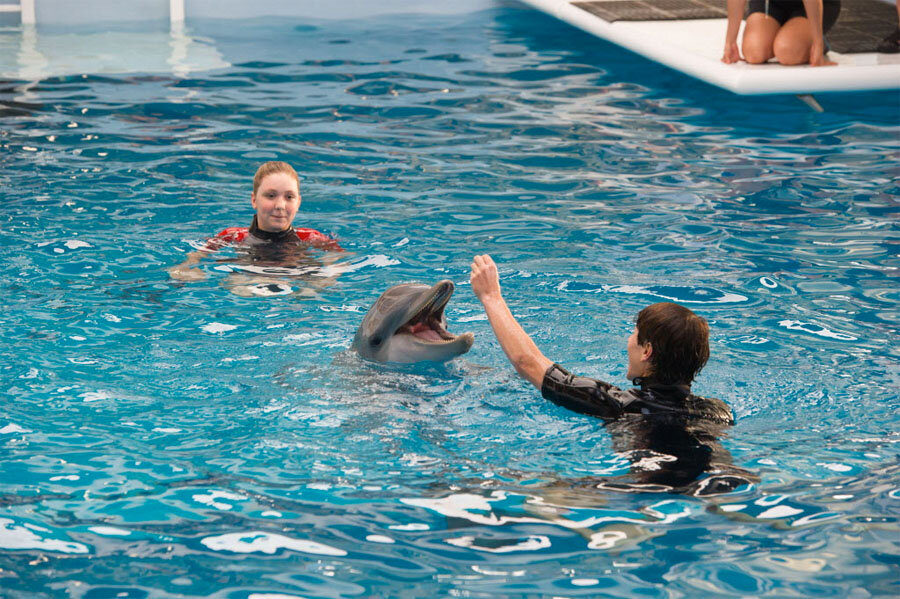'Dolphin Tale 2' is an engaging and rousing film
Loading...
Containing all the elements that made the 2011 original boy and his dolphin story a hit with audiences and critics, Charles Martin Smith's "Dolphin Tale 2" is another engaging film inspired by the real-life inhabitants of the Clearwater Marine Aquarium.
Bringing together the original cast, headed by Harry Connick Jr., and, of course, Winter, the remarkable dolphin outfitted with a groundbreaking prosthetic tail who put the CMA on the map, the sequel again eschews cloying dramatics in favor of a straight-ahead, more docudrama feel.
The nonetheless rousing results should make a splash with family audiences who were responsible for "Dolphin Tale's" tidy $72.3 million domestic haul.
This time around, Smith also dons a screenwriter's cap in recounting the subsequent rescue and rehabilitation of injured marine animals brought to the actual Florida Gulf Coast facility.
It has been several years since the film's young Sawyer Nelson (Nathan Gamble) first bonded with the dolphin who had lost her tail after becoming ensnared in a crab trap, but the death of Panama, an elderly dolphin who was both companion and surrogate mother to Winter, has left the younger dolphin despondent and uncooperative.
The clock is ticking for CMA's Dr. Clay Haskett (Connick, Jr.) to abide by USDA regulations and find a female companion suitable for pairing with Winter or see the inspirational creature moved to another aquatic facility.
Their best bet would seem to be Mandy, a recent rescue who had been found beached and severely sunburned, but keeping her at the aquarium with Winter would mean not letting her go back to her natural habitat.
That would go against Haskett's rescue/rehabilitate/release mission.
Hope ultimately arrives in the form of a dolphin calf stray (discovered, in real life, on the night of the first film's wrap party), but there's no guarantee the infant will bond with the tail-less Winter.
Even more so than last time out, Smith focuses a great deal of attention on the details — the day-to-day minutiae of the facility's rescue and rehab work that elevate what could have otherwise been another well-intentioned but soggy fish-out-of-water yarn.
Those specifics are efficiently navigated by Connick, Jr., who blends a convincing authority with tenderness, as does the rest of the returning cast, including Cozi Zuehlsdorff as Haskett's concerned daughter, Hazel, and, in reduced roles, Kris Kristofferson as her grandfather, Ashley Judd, as Sawyer's mom and Morgan Freeman as prosthetics whiz Dr. Cameron McCarthy.
Echoing that unadorned, matter-of-fact approach is the crisp cinematography and graceful score by "Dolphin Tale" newcomers, Daryn Okada and Rachel Portman, respectively.







